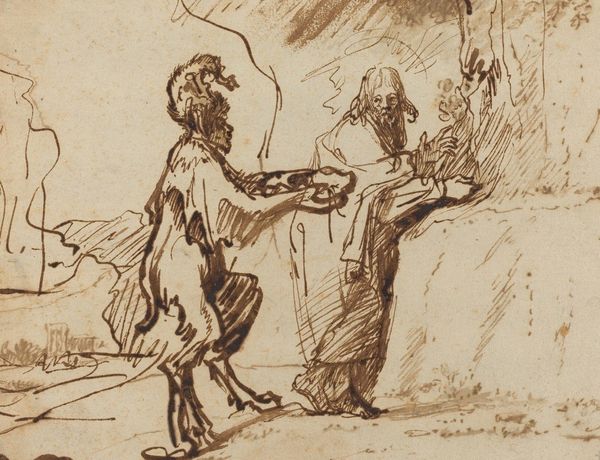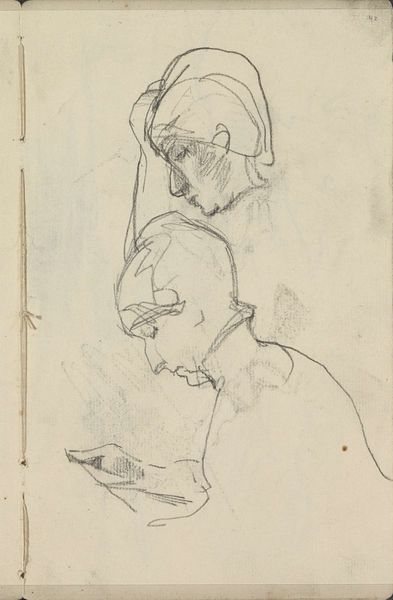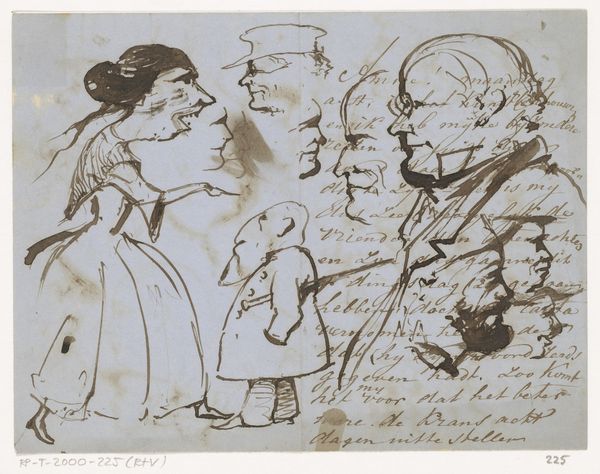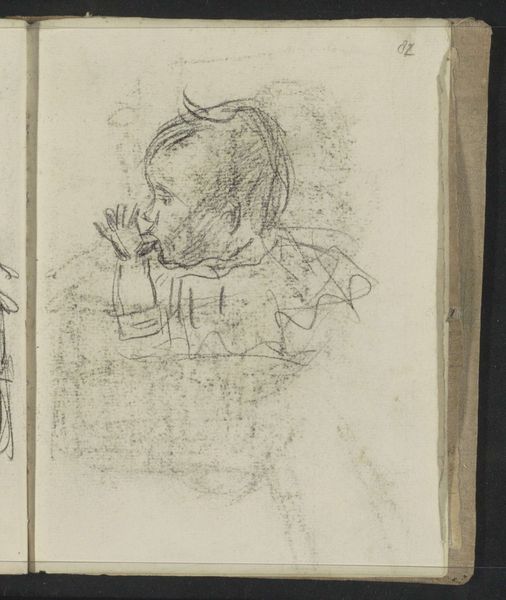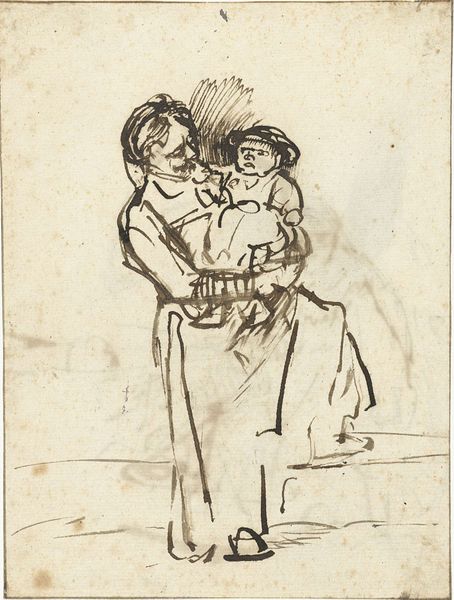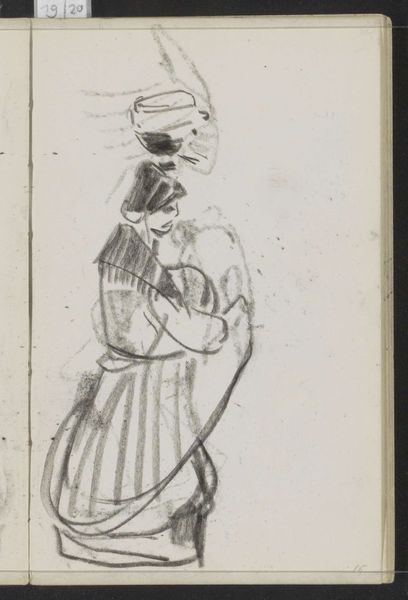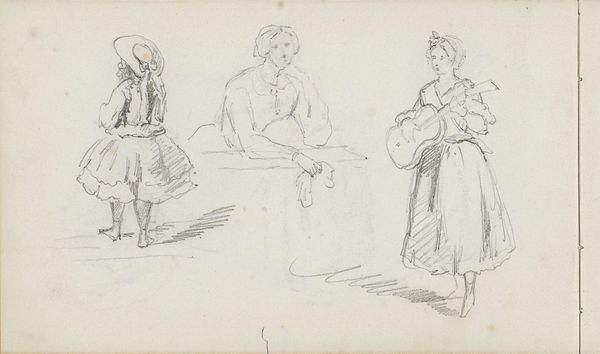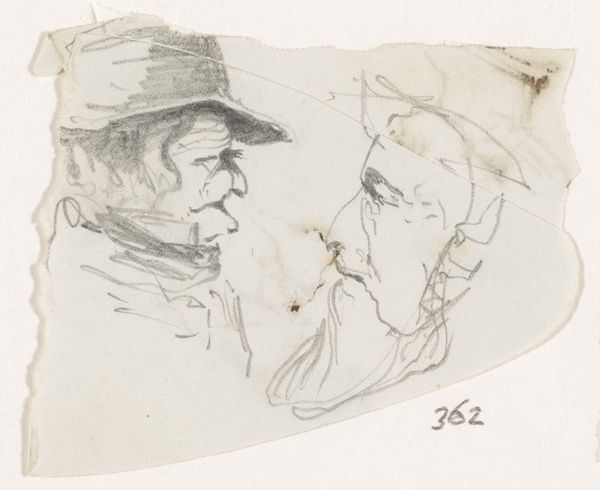
drawing, print, ink
#
portrait
#
drawing
#
comic strip sketch
#
imaginative character sketch
# print
#
pen sketch
#
figuration
#
personal sketchbook
#
ink
#
idea generation sketch
#
sketchwork
#
ink drawing experimentation
#
pen-ink sketch
#
sketchbook drawing
#
sketchbook art
Copyright: National Gallery of Art: CC0 1.0
Editor: This is "Illustration to V. Hofmannsthal, \"Andreas\"" by Imre Reiner, possibly from 1944, a drawing done in ink, perhaps later printed. It's really intriguing how just a few lines can evoke so much... a definite air of mystery. What catches your eye when you look at this piece? Curator: Ah, yes, Reiner! What I find particularly evocative is the suggestion of character conveyed with such economical strokes. It reminds me a bit of theatre make-up, especially in how the shading almost sculpts the faces, imbuing them with... well, a *sense* of narrative, if not a completely defined one. Does that resonate with you at all? It almost feels as if we are peering into Reiner's sketchbook. Editor: I definitely see what you mean about the theatrical quality. It’s as if these characters are caught mid-performance. The heavy shadows on the right, especially. I can almost feel the spotlight, but also an incomplete, fragmented sensation that is both suggestive and vague. What do you think that juxtaposition accomplishes? Curator: Excellent question! It suggests, doesn't it, the blurry edges of memory or perhaps even identity. Think of Hofmannsthal’s work itself: often exploring themes of self-discovery and fragmented realities. Perhaps Reiner is mirroring that, inviting us to participate in piecing together the narrative. Maybe that intentional lack of resolution *is* the resolution. It makes you wonder, doesn’t it, what stories are unfolding just beyond the visible. It almost asks *us* to become authors ourselves. Editor: That's a lovely way to put it. I initially felt a bit lost in the sketchiness, but now I see the invitation, this intentional ambiguity. It makes the illustration much more engaging. Curator: Precisely! It's about embracing that open-endedness. The ink blossoms, hinting at untold stories, unfinished symphonies! Now I’m thinking about the book...
Comments
No comments
Be the first to comment and join the conversation on the ultimate creative platform.
